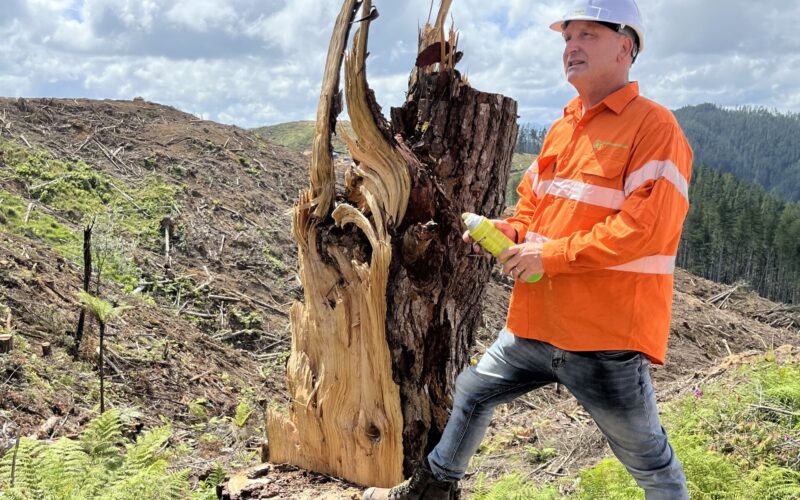By mid-2026 forest-sourced wood pellets are due to start flowing from a new project in Bay of Plenty that brings the promise of a clean energy source and value-added timber opportunity.
Australian listed company Foresta has gone public about its move to build a torrefied black wood pellet plant at Kawerau, alongside a plant to extract high value chemicals from pine timber.
Managing director Ray Mountfort said the plant will initially produce 65,000 tonnes of pellets a year, supplying South Island energy resource company Tailored Energy & Resources. The company supplies industrial customers with boiler and heating fuels and includes the likes of Synlait as clients.
Black or torrefied wood pellets are wooden pellets heated to 200-300degC without oxygen and have proven to be a successful “drop in” fuel to replace coal, with recent success proven in a trial at Genesis Energy’s Huntly power plant.
“While Fonterra and Genesis are large users of coal, they are still only a quarter of the market, so there is plenty of opportunity beyond them out there,” Mountfort said.
The plant’s construction and commissioning – which are subject to resource consent being granted – represent a rocky 14-year arc through the innovative technology’s development for Mountfort.
Back in 2011 he established the technology to take forest waste including tree stumps and turn it into turpentines, rosins (resin chemicals) and ink compounds. But a boardroom shakedown after United States company American Pine and Rosin Derivatives bought into the company had him exited from the company.
The company later went into liquidation, and Mountfort continued his work on timber chemicals in Queensland.
He then bought into listed forest processing company Foresta and moved the operation to New Zealand.
Foresta has signed a 30-year lease agreement on a 9.6 hectare site at Kawerau with local Putauaki Trust, with the pellet plant to be bought in from Europe while the chemical extraction plant is also being constructed.
He acknowledges the path to his latest venture has been a tough one.
“There have been some lessons along the way, and we have picked good partners and have a good board.”
Foresta chair Henry Cheng was previously chair of Australian resource company Formosa Resources.
Mountfort said the Kawerau site is only Stage 1 of a wider production plan that has nine regions flagged nationally with potential timber resources and pellet customers.
Annual initial production of 65,000t of pellets would require about 200,000t of logs or about 330ha of forestry supply a year.
Mountfort said the company does not intend to source material from forestry waste or slash sources.
“It is something we would rather stay away from, it’s really someone else’s mess.”
He said instead farmers could be a valuable market source for timber, particularly “old man pine” that is dense in resin chemicals.
For wood lot owners, he maintains Foresta can extract 10-20% more timber off a block, given their use of the resin-dense stumps and tops for the chemical production.
“From the site in Kawerau we have identified 2000 pine forest owners within 100km.”
While initially not competing with NZ’s raw log trade, Mountfort said as processing volumes ramp up that becomes inevitable.
“For that reason, we have priced our supply cost on the average of all grades of log values for the past five years. New Zealand exports about 22 million tonnes at an average value of $111/tonne.”
He said most pellet operators have to put raw material price near $50/tonne, but the ability to draw off and process high value chemicals and resins means Foresta can tolerate a higher cost threshold while also helping absorb a low value, volatile export product by turning it into higher value outputs.
Brian Cox, chair of Bioenergy Association of NZ, welcomed the arrival of a company capable of “closing the loop” and processing lower grade pine into a higher value product.
“This is exactly the type of project we need, and it is great they are putting a stake in the ground, and it is likely to generate considerably more interest in this particular sector.”










